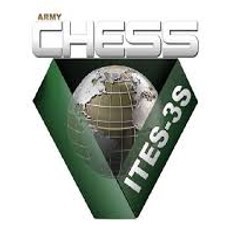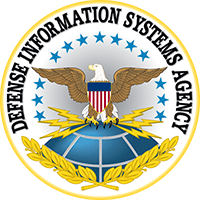In addition to enabling strategic objectives, transformational BPR is essential to organizations that anticipate (proactive) or encounter (reactive) significant shifts in their organization’s business environment. These types of shifts or changes in the business environment are referred to as a strategic inflection points – a term coined by Andy Grove, former CEO of Intel. Based on my experience across the spectrum of industries across the world, there are 10 types of strategic inflection points that require transformational BPR.
1. Rapid Growth
Organizations experiencing or positioning for rapid growth require scalable business processes. To successfully support a 2x-3x increase in sales revenue or sales volume over a short interval of time, an organization cannot just add additional staff at a proportional rate. An organization needs to transform to a high-performing, highly-scalable process platform that enables the organization to accommodate rapid growth with an incremental rather than proportional increase in staff.
2. Enterprise Application Software Initiatives
Significant improvement in business processes can result from low-tech / no-tech changes in business policies, procedures and organization of workflow. However, transformation typically requires smart and aggressive application of information technology.
When an organization implements or upgrades enterprise class application software, BPR is integral to a successful outcome of implementation – otherwise legacy and dated business policies, procedures and workflow rules will embed and future institutionalize into the operating fabric of the organization.
3. Regulatory Compliance | Organizational Governance
Many industries and vertical segments are experiencing substantial increases in regulation from multiple regulatory bodies – national, state, local as well as industry self-regulation.
Increased regulation requires agile and transparent processes. New regulations often require compliance within a short time frame. The regulations and “compliance” is often subject to interpretation – which continually evolves.
Effective, efficient compliance requires frequent and often significant changes to business processes and requires increasingly higher levels of transparency and increasingly granular reporting capability to internally monitor and ensure compliance and to provide regulators with objective support of compliance.
4. Business Process Outsourcing & Shared Services Arrangements
Outsourcing and shared services are increasingly complex. The traditional notion of external outsourcing and internal shared services of business functions, such as call centers and customer support, are evolving into highly interrelated process flows between an organization and its business units and with multiple outsource providers and/or shared service centers of excellence across multiple segments of business processes among multiple layers of an organization.
These complex and highly interrelated process flows require fundamental transformation of the traditional notion of a business process and requires significant transparency across the process. Core to the success of outsourcing and shared services is balancing across enterprise global best practices with the objective need for local variation at the business unit level.
5. Leaning / Flatting the Organizational Hierarchy
The term leaning / flatting the organization hierarchy refers to reducing levels of middle management. The assumption is that the tactical hands-on layer of the organization is already lean and high performing – but the middle management layer is too wide and deep.
This is a valid assumption in a wide range of organizations. However, the problem is in execution. Although traditional tactics such as reduction in force, lay-offs and voluntary separation result in the reduction of middle management, these tactics often hollow-out the organization’s base of deep business knowledge maintained tribally by the former middle managers. Traditional tactics often result in expensive and time consuming rebuilding of this knowledge base.
An alternative approach is to incrementally via BPI or rapidly via BPR glean and distill this deep tribal knowledge proactively. And, concurrently, build the mechanical / rules-based procedural knowledge into the tactical layer of the organization and judgment based knowledge into the operational layer of the organization. This approach results in a naturally (and inherently stable) lean middle management layer that is self-sustainingly lean over time.
6. Mergers & Acquisitions
To fully realize the value from an acquisition or merger requires integration of the constituent organizations at multiple layers - tactical, operational and strategic as well as the enabling components of each layer - people /roles, processes and technology – into a cohesive, robust (stable) high performing platform.
Organizations that are active in acquisitions require business processes that are agile and highly extensible to enable the organization to rapidly integrate and leverage new product and services lines.
The concept of enterprise best practices balanced with local variation (See #4 above -Outsourcing and Shared Services) also applies to Mergers & Acquisitions.
7. Divestitures / Going Private
The converse of mergers and acquisitions is divestitures and going private. A business unit of a public company that is privatized or becomes an autonomous public company requires an equally fundamental transformation to enable the organization to fully realize the benefits and mitigate the risks of privatization or autonomy.
The new organization is no longer subject to the operating polices of “corporate” and in the case of privatization, no longer subject to the scrutiny of a public company including the quarterly reporting cycle of wall street analysts and regulatory requirements such as Sarbanes-Oxley.
Divested and privatized organizations must rapidly transform to shed the operating constraints of the past and embrace and exploit the freedom to innovate.
8. Pre-IPO / Early Post IPO (also applies to rapid growth)
The transformation from entrepreneurial culture to an operating culture is difficult. This applies to organizations in the pre-IPO stage, rapid growth organizations (see #1 above) and to organizations that are more mature but have not yet made the transition from an entrepreneurial culture to a process based operating culture.
Organizations that fit this profile are characterized by rapid growth driven by a cast of “Heroes.” Heroes are the core group of people that are very intelligent and very driven. They figure out the business “as they go” because often there is not a traditional model to follow. The business operational knowledge of the organization lives largely as tribal knowledge in the minds of the heroes and has not been captured and formally disseminated among the “troops.”
It’s very difficult to scale an organization that has not made the shift to a process based operating culture. And, there is inherent risk associated with losing a hero with deep tribal knowledge. To achieve sustainable growth, an entrepreneurial organization culture must transform to a process based operating culture.
9. Graying of the Workforce / Talent Acquisition
Many organizations have a significant portion of their workforce approaching retirement. And, similar to the hero based entrepreneurial culture (see #8 above) as well as wide and deep levels of middle management (see #5 above), have relied on the accumulated tribal knowledge and judgment of this portion of the workforce to carry the business.
However, unlike the entrepreneurial culture, this accumulated base of tribal knowledge is rapidly exiting – and it’s becoming increasingly difficult to backfill because of increased demand and competition for business talent.
It’s crucial for these organizations to capture and transform this knowledge into a process based operating culture while this knowledge is available – and develop highly effective and efficient business talent acquisition and retention processes to sustain the backfill and continually glean and integrate business knowledge.
10. Organizational Renaissance
Renaissance is the transformation of an organization that has (or had) significant market share and is (or was) highly successful in a particular industry segment for many years – but all of a sudden competitors begin to make significant headway in the space - placing significant pressure on the organization’s leadership position.
The leadership position and level of success over the years masked growing issues in connection with organizational effectiveness and operating efficiency. Organizations in need of renaissance did not recognize and/or did not embrace a strategic inflection point and were caught flat-footed as their business environment changed and competitors overtook leadership positions.
Subscribe to my blog | Visit our Knowledge Hub
Visit my YouTube channel | Connect with me on LinkedIn
Check out our Business Analysis Training Courses and Consulting Services




















